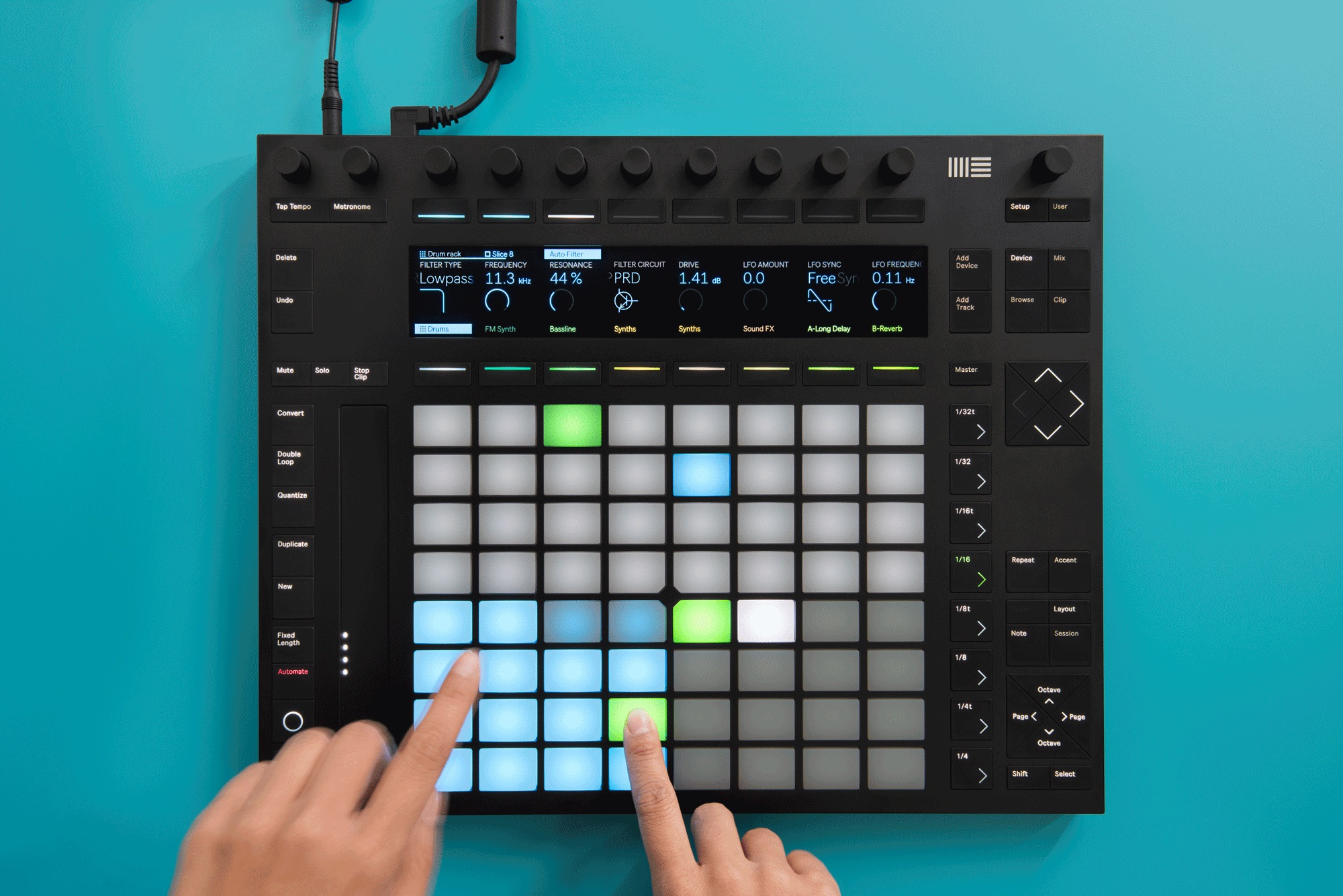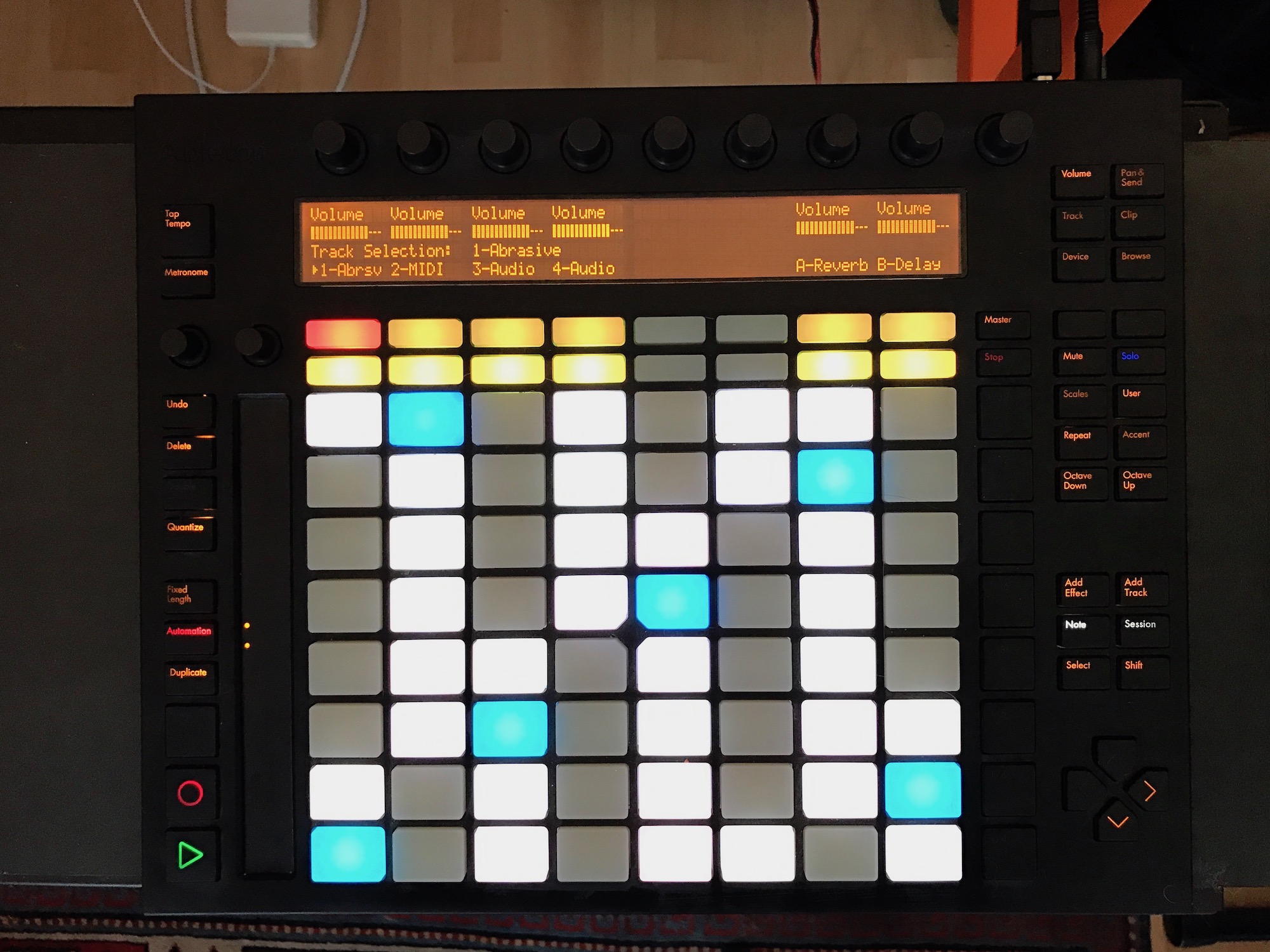

However, buyers should know that going in. There are far less expensive alternatives if you don’t use Live. It performs optimally in Live, and to make the absolute most of it, you wouldn’t want to use it in other DAWs. This isn’t the worst thing in the world, but it does indicate that Push 2 isn’t a be-all-end-all tactile control surface for Live.Īnother potential drawback is the fact that Push 2 is basically Ableton Live exclusive. That means you’ll still have to pull up to computer to finalize arranging and sequencing your work. One of the biggest limitations is not having support for the Arrangement View in Ableton Live. The RGB back lighting is the icing on top. As far as the pads go, they’re made from soft silicone and are diligently calibrated to capture and send signal at any velocity. They’re nearly flush with the instrument’s top panel for a slick feel. The buttons and pads have been wonderfully reinvented to play elegantly and musically.

Push 2 has its own “touchstrip,” though, which can be used for pitch-bending and creative effects. As we touched on above, you can cycle through all of your third-party plugins, Ableton plugins, instruments, and more-without ever needing to grab a mouse or swipe a touchpad. This can help keep your one-shots visually organized so you always know exactly where you are.Įverything about Push keeps you focused on the tactile device in front of you and away from the computer screen. Simply hold shift and tap the pad you want to change.
Push 1 ableton 11 code#
While working with drums, one of the cool features is being able to individually color code each pad. It’s so good that it’s been in version 2 since 2015! Keep Organized with Color Coding Simply put, Push 2 is everything that a new-and-improved release should be and then some.
Push 1 ableton 11 upgrade#
The LCD display is a massive leap from Push 1’s dated looking interface, and even the new pads alone are worth the upgrade for many users. The aluminum faceplate is also a welcomed improvement over the plastic of the Push 1. Push 2 keeps a lower profile than the original, but gets longer and wider for a larger playable surface. Consider how impressed people were with Push 1, which AKAI helped execute, and imagine everything turned up to 11 on the Push 2-strictly an Ableton device. Not only is Ableton Push 2 functionally superior to 1, but even its design and construction is better. Ableton Push 2 Expands on the Functionality of Its Predecessor One of its fantastic features for electronic production is the ability to manipulate samples in a variety of useful ways, right inside the controller.

It helps keep technology “out of the way,” so you can stay locked in the creative flow, minus fussing with the computer/DAW. Ultimately, Ableton designed Push to give artists/producers everything they need to make music right at their fingertips. From there, you can use eight rotary knobs to adjust mapped parameters and even get some rudimentary mixing done with the tactile surface. Push also lets you skim through all of your plugins, devices, and samples for implementation in Live. Players can record live or use the built-in step sequencer. It can trigger samples and clips as well as Drum Rack beats with seamless Live integration. The company soon followed up with the Ableton Push 2 at the end of 2015, and it’s been in play ever since. Designed to function inside Ableton Live software, it was an innovative device meant to be treated like an instrument rather than an average MIDI controller. Ableton launched the Push controller in collaboration with AKAI back in 2013.


 0 kommentar(er)
0 kommentar(er)
